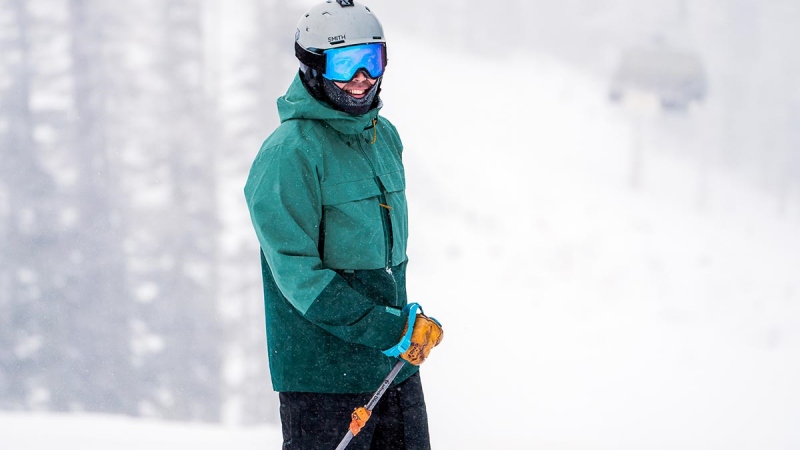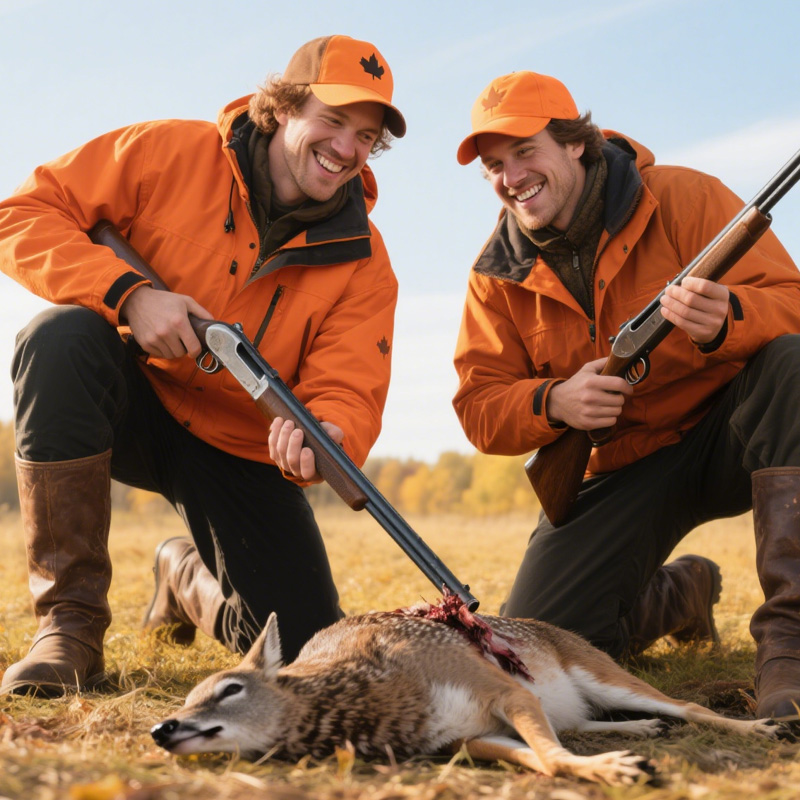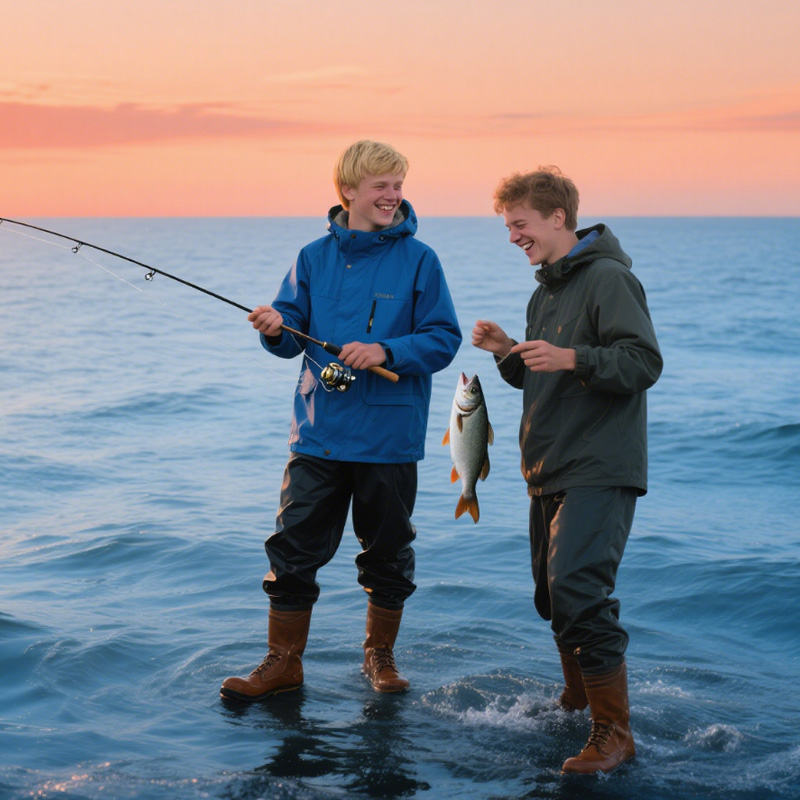Deer hunting is a pursuit that demands precision, patience, and preparation. Among the most critical pieces of equipment for any deer hunter is the hunting jacket—a garment that must balance warmth, weather resistance, stealth, and comfort to ensure success in the field. Whether you’re stalking whitetails in dense forests or waiting out a buck in an open stand, the right deer hunting jacket can mean the difference between a rewarding hunt and a frustrating one. With the global hunting apparel market expanding due to rising interest in outdoor recreation and advancements in fabric technology, selecting the best jacket tailored to your needs has never been more important.
This comprehensive guide explores everything you need to know about deer hunting jackets, from their essential features and types to top manufacturers and industry trends. Designed for hunters, outdoor enthusiasts, and retailers alike, this article provides actionable insights to help you choose a jacket that enhances your performance in the wild. Let’s dive into the world of deer hunting jackets and discover how to elevate your next hunting experience.
1. Understanding the Role of a Best Deer Hunting Jacket
A best deer hunting jacket is more than just outerwear—it’s a specialized tool engineered to meet the unique demands of the sport. Deer have exceptional senses, particularly their ability to detect movement, sound, and scent, making stealth a top priority for hunters. A quality jacket must provide camouflage, minimize noise, and mask human odor while protecting against unpredictable weather conditions like rain, snow, and wind. Additionally, it should offer sufficient insulation for cold mornings and breathability for active pursuits, ensuring comfort across long hours in the field.
Unlike casual jackets, best deer hunting jackets are built for rugged outdoor use, often incorporating advanced materials like Gore-Tex, fleece, or synthetic insulation. They cater to diverse hunting styles—whether you’re in a treestand, spot-and-stalk hunting, or tracking through thick brush. Understanding these roles helps hunters make informed decisions when investing in gear that aligns with their environment and strategy.
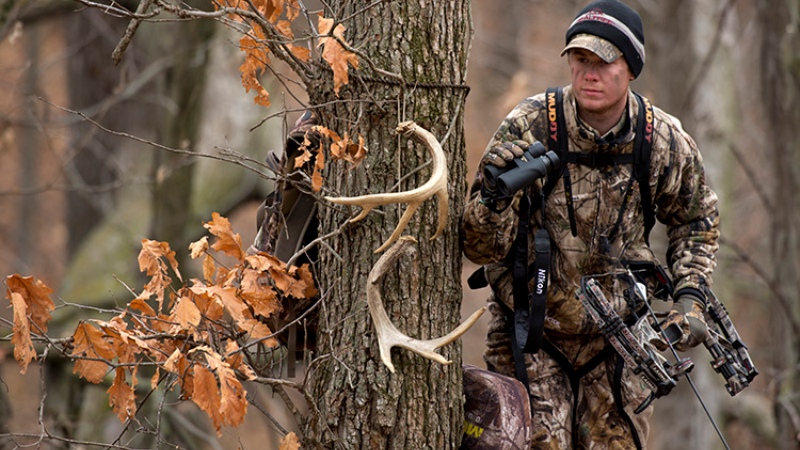
2. Types of Best Deer Hunting Jacket
Best Deer hunting jackets come in various styles, each designed for specific conditions and hunting methods. Below, we explore the most common types and their applications.
2.1 Softshell Hunting Jackets
Softshell hunting jackets are lightweight, flexible options ideal for active hunters. They offer a balance of weather resistance and breathability, making them perfect for early-season hunts or mild climates.
2.1.1 Features and Benefits:
- Stretch Fabric: Allows for unrestricted movement during stalking or climbing.
- Quiet Materials: Reduces noise to avoid spooking deer.
- Water-Resistant Coating: Shields against light rain or dew.
2.1.2 Best Use Case
Softshells excel in moderate temperatures (40–60°F) and dynamic hunting scenarios, such as bowhunting or hiking through varied terrain.
2.2 Insulated Hunting Jackets
Insulated hunting jackets are designed for cold-weather hunts, providing warmth without excessive bulk. They’re a staple for late-season deer hunting in regions with harsh winters.
2.2.1 Features and Benefits
Synthetic Insulation: Materials like PrimaLoft or Thinsulate retain heat even when wet.
Windproof Layers: Blocks chilling gusts on exposed stands.
Layering Compatibility: Roomy enough to wear over base layers.
2.2.2 Best Use Case
Ideal for subfreezing temperatures (below 30°F) and stationary hunts, such as treestand or blind setups.
2.3 Waterproof Hunting Jackets
Waterproof hunting jackets are built to keep hunters dry in rain, snow, or wet environments. They often feature sealed seams and advanced membranes like Gore-Tex.
2.3.1 Features and Benefits
- Complete Waterproofing: Ensures dryness during prolonged exposure.
- Breathable Design: Prevents overheating and sweat buildup.
- Durable Shell: Resists tears from brush and branches.
2.3.2 Best Use Case
Perfect for rainy climates or hunts near swamps and rivers, where staying dry is critical.
2.4 Blaze Orange Hunting Jackets
Blaze orange hunting jackets prioritize safety in areas where firearm hunting is prevalent. Many states require a minimum amount of visible orange during deer season.
2.4.1 Features and Benefits
High Visibility: Reduces the risk of accidents in crowded hunting zones.
Camo Integration: Often paired with camouflage patterns for concealment.
Versatile Options: Available in insulated or lightweight models.
2.4.2 Best Use Case
Mandatory for rifle hunters in regulated areas, especially during peak seasons.
3. Key Features to Look for in a Deer Hunting Jacket
Selecting the right deer hunting jacket requires evaluating its features against your specific needs. Here are the essential elements to consider:
3.1 Material and Durability
High-quality jackets use rugged fabrics like ripstop nylon or polyester to withstand thorns and rough terrain. Look for reinforced stitching and abrasion-resistant panels for longevity.
- Ripstop Nylon: This fabric is designed to prevent tears from spreading, making it ideal for hunting in environments with dense vegetation.
- Polyester: Known for its durability and resistance to wear and tear, polyester is a common choice for hunting jackets.
- Reinforced Stitching: High-quality jackets often feature reinforced stitching at stress points to prevent rips and tears.
- Abrasion-Resistant Panels: Additional reinforcement in high-wear areas like elbows and shoulders can extend the life of the jacket.
3.2 Camouflage and Concealment
- Effective camouflage patterns—such as Realtree, Mossy Oak, or Optifade—blend into natural surroundings. Choose a pattern that matches your hunting environment, whether it’s hardwood forests, open fields, or snowy landscapes.
- Realtree: Offers a variety of patterns designed to mimic natural environments, making it a popular choice for hunters.
- Mossy Oak: Known for its realistic tree bark and foliage patterns, Mossy Oak is effective in forested areas.
- Optifade: A modern camouflage pattern designed to break up the human form, making it harder for deer to detect movement.
- Environment-Specific Patterns: Ensure the camouflage matches your hunting environment, whether it’s dense forests, open fields, or snowy landscapes.
3.3 Weather Resistance
A jacket should protect against wind, rain, and cold. Waterproof membranes, windproof layers, and sealed zippers are key for all-weather performance.
- Waterproof Membranes: Look for jackets with waterproof membranes like Gore-Tex or similar technologies to keep you dry in wet conditions.
- Windproof Layers: A windproof layer helps block wind, keeping you warm and comfortable in blustery conditions.
- Sealed Zippers: Sealed zippers prevent water ingress, ensuring that your jacket remains waterproof even in heavy rain.
3.4 Noise Reduction
Deer are highly sensitive to sound. Opt for jackets with quiet fabrics like fleece or brushed polyester to minimize rustling during movement.
- Quiet Fabrics: Materials like fleece and brushed polyester are less likely to make noise when you move, reducing the risk of alerting deer.
- Fabric Construction: Look for jackets with a soft, non-rustling construction to minimize noise while you stalk your prey.
3.5 Insulation and Breathability
Insulation keeps you warm, but breathability prevents overheating. Look for jackets with ventilation zippers or moisture-wicking liners for temperature regulation.
- Insulation: Choose jackets with adequate insulation to keep you warm in cold weather. Options include synthetic insulation or down fill.
- Breathability: High breathability ratings (10,000–20,000 g/m²/24h) ensure that moisture vapor can escape, preventing you from overheating.
- Ventilation Zippers: Side or underarm zippers allow for quick temperature regulation during periods of high exertion.
- Moisture-Wicking Liners: Liners that wick moisture away from your skin help keep you dry and comfortable.
3.6 Pockets and Storage
Multiple pockets—chest, handwarmer, and cargo—provide convenient storage for calls, rangefinders, and snacks. Ensure they’re accessible and secure.
- Chest Pockets: Convenient for storing small items like calls and binoculars.
- Handwarmer Pockets: Provide a place to keep your hands warm when not in use.
- Cargo Pockets: Larger pockets for storing larger items like snacks, extra layers, or a rangefinder.
- Secure Closures: Ensure pockets have secure closures, such as zippers or Velcro, to prevent items from falling out.
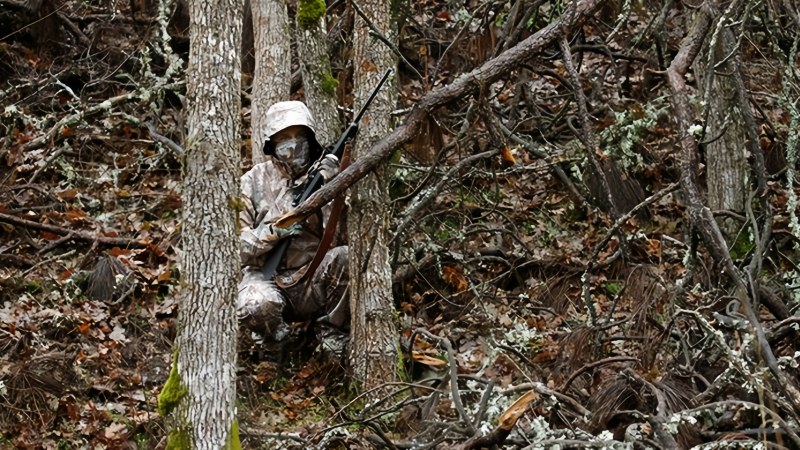
4. How to Choose the Right Deer Hunting Jacket for Your Needs
Selecting the perfect jacket involves aligning its features with your hunting style and environment. Follow these steps to find the ideal deer hunting jacket that meets your specific needs and enhances your hunting experience.
4.1 Assess Your Hunting Environment
Understanding your hunting environment is crucial for choosing the right jacket. Different environments demand different features:
4.1.1 Forest
- Camo Patterns: Opt for dense, detailed camouflage patterns like Realtree or Mossy Oak that blend seamlessly with the complex textures of forest foliage.
- Quiet Fabrics: Choose materials like fleece or brushed polyester that minimize rustling sounds, which can alert deer to your presence.
- Durability: Look for jackets with reinforced stitching and abrasion-resistant panels to withstand the rigors of dense underbrush and thorny terrain.
4.1.2 Open Terrain
- Windproofing: Prioritize jackets with windproof layers to protect against the often gusty conditions found in open fields and prairies.
- Lighter Camouflage: Opt for simpler, more subdued camouflage patterns that blend with the open landscape without being overly conspicuous.
- Visibility: Consider jackets with blaze orange accents for added safety, especially in areas where other hunters may be present.
4.1.3 Wet Areas
- Waterproofing: Choose jackets with high waterproof ratings (10,000–20,000 mm) and sealed zippers to keep you dry in rainy or snowy conditions.
- Quick-Drying Materials: Opt for jackets made from materials that dry quickly, such as nylon or polyester, to ensure comfort even in damp environments.
- Breathability: High breathability ratings (10,000–20,000 g/m²/24h) are essential to prevent overheating and keep you comfortable during long, active hunts.
4.2 Determine Your Hunting Style
Your hunting style significantly impacts the type of jacket you need. Consider the following:
4.2.1 Treestand Hunters
- Insulation: Focus on jackets with ample insulation to keep you warm during long, stationary hunts. Look for high-fill-power down or synthetic insulation.
- Safety: Prioritize jackets with blaze orange accents or panels to increase visibility to other hunters, ensuring your safety.
- Comfort: Consider jackets with features like handwarmer pockets and adjustable cuffs to enhance comfort and convenience.
4.2.2 Spot-and-Stalk Hunters
- Lightweight and Breathable: Emphasize jackets made from lightweight, breathable materials like softshell fabrics. These jackets allow for freedom of movement and prevent overheating during active stalking.
- Noise Reduction: Opt for quiet fabrics to minimize rustling sounds, which can alert deer to your presence.
- Ventilation: Look for jackets with ventilation zippers to help regulate temperature during periods of high exertion.
4.3 Consider Weather Conditions
Matching your jacket’s insulation and weather resistance to your region’s climate is essential for comfort and performance:
4.3.1 Early Fall
- Lightweight Insulation: Choose jackets with minimal insulation to keep you comfortable in milder temperatures.
- Breathability: Prioritize high breathability to prevent overheating during active hunts.
- Water Resistance: Opt for jackets with basic water resistance to protect against light rain or dew.
4.3.2 Late Fall and Winter
- Heavy Insulation: Look for jackets with substantial insulation, such as high-fill-power down or thick synthetic insulation, to keep you warm in cold weather.
- Waterproofing: Choose jackets with high waterproof ratings (10,000–20,000 mm) and sealed zippers to protect against heavy snow and rain.
- Windproofing: Ensure the jacket has windproof layers to block cold winds and maintain warmth.
4.4 Set a Budget
Quality deer hunting jackets can range from $100 to $500. Setting a budget helps you balance cost with the features and durability you need:
- Entry-Level Jackets ($100–$200): These jackets offer basic features and are suitable for casual hunters or those on a tight budget. Look for jackets with decent waterproofing and insulation, but expect fewer advanced features.
- Mid-Range Jackets ($200–$300): These jackets provide a good balance of quality and features. Expect better waterproofing, insulation, and breathability, as well as some advanced features like ventilation zippers and reinforced stitching.
- High-End Jackets ($300–$500): These jackets offer the highest level of performance, durability, and features. Look for advanced technologies like Gore-Tex, high-fill-power down, and multiple layers of insulation. These jackets are ideal for serious hunters who demand the best performance and comfort.
4.5 Try Before You Buy
Testing the jacket before purchase is essential to ensure it meets your expectations in the field:
- Fit: Ensure the jacket fits comfortably without restricting movement. It should be snug but not tight, allowing for layering underneath.
- Mobility: Test the jacket’s flexibility and range of motion. Ensure it doesn’t restrict your ability to draw a bow or shoulder a rifle.
- Noise Level: Check the jacket’s noise level by moving around and listening for any rustling sounds. Opt for quiet fabrics to minimize noise.
- Features: Verify that all features, such as zippers, pockets, and ventilation systems, function smoothly and meet your needs.
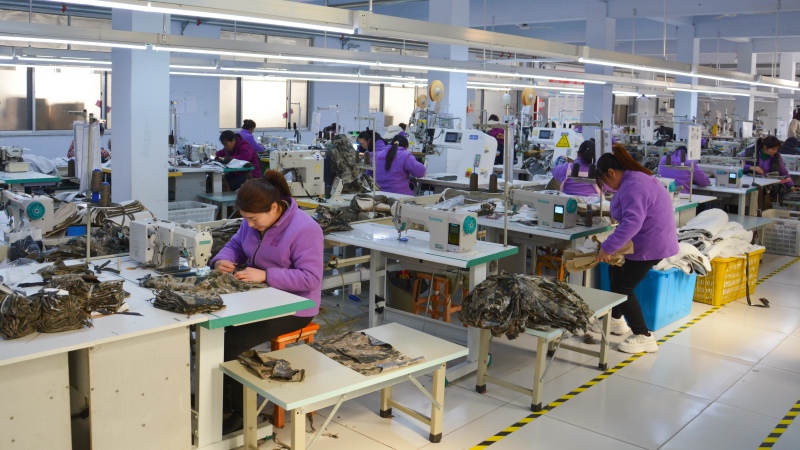
5. Why a Deer Hunting Jacket Matters for Success
A deer hunting jacket is an investment in your performance, comfort, and safety. It enables you to endure harsh weather, remain concealed, and focus on the hunt rather than your gear. For example, a waterproof jacket keeps you dry during a downpour, while a quiet softshell lets you close the distance on a wary buck undetected. By addressing the specific demands of deer hunting—stealth, weather protection, and visibility—the right jacket becomes a critical ally in the field.
Consider the experience of seasoned hunters: those equipped with premium jackets report longer, more productive hunts thanks to enhanced comfort and confidence. Whether you’re a novice or a veteran, the right jacket elevates your ability to adapt and succeed.
6. Conclusion
Choosing the ultimate deer hunting jacket is about aligning functionality with your unique hunting needs. From softshells for agility to insulated models for frigid mornings, the options are vast and varied. Leading manufacturers like Sitka Gear, KUIU, and Under Armour offer cutting-edge solutions, while timeless brands like Filson cater to tradition. By focusing on key features—durability, camouflage, weather resistance, and comfort—you can select a jacket that enhances every aspect of your hunt.
Ready to upgrade your gear? Explore the collections from top manufacturers and test your options in real-world conditions. A well-chosen deer hunting jacket doesn’t just keep you warm—it brings you closer to the thrill of the chase and the satisfaction of a successful harvest. Gear up and make your next hunt unforgettable.

